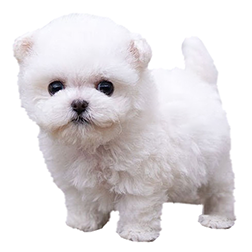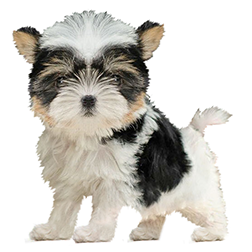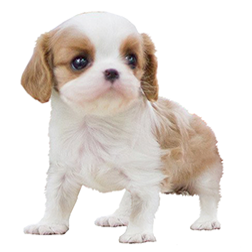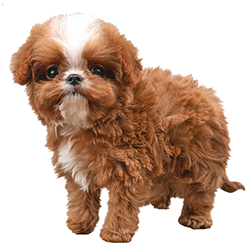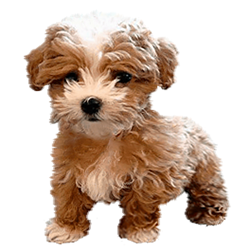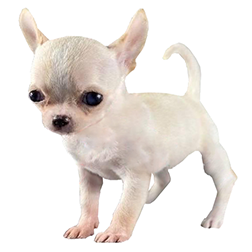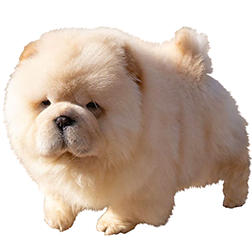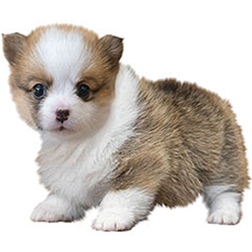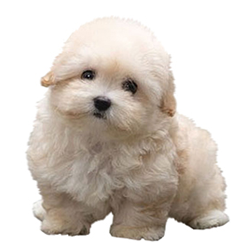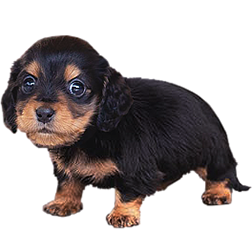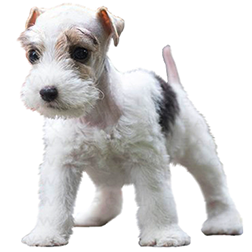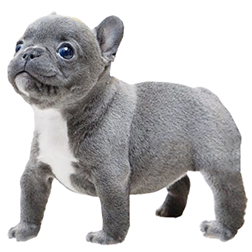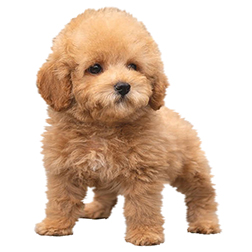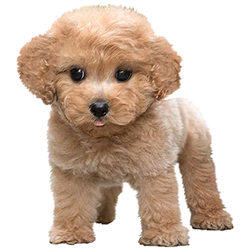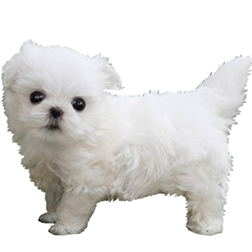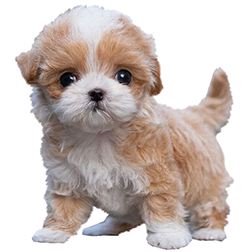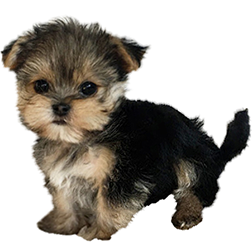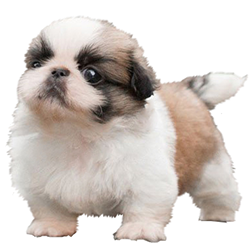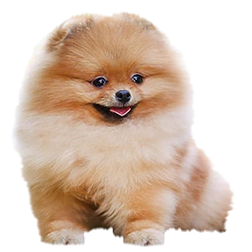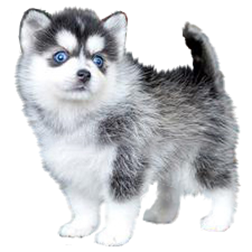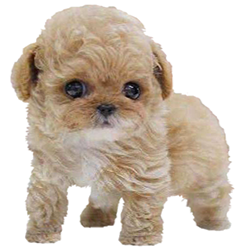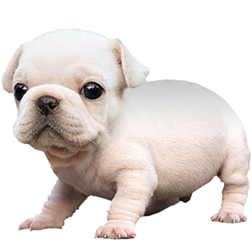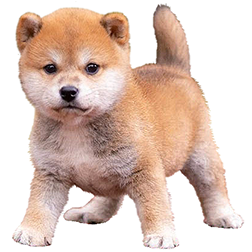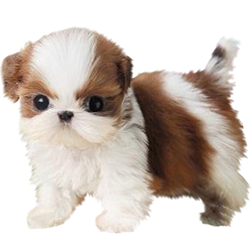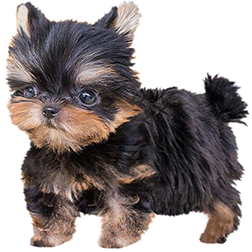Teacup Dog Breeds
The Ultimate Teacup Dog Group Guide
An Enchanting Introduction to Teacup Dogs
Imagine holding a bundle of fluff so tiny it fits snugly in the palm of your hand, gazing back at you with big, expressive eyes that seem to say, "Yes, I'm the boss now." Welcome to the captivating world of Teacup Dogs, where size doesn’t dictate personality. These pint-sized powerhouses bring joy, mischief, and an outsized dose of charm into the lives of their lucky owners.
Teacup dogs aren’t just small—they’re a lifestyle. Often weighing under five pounds, these miniature marvels are bred from their standard-sized counterparts to be even tinier, yet just as full of heart. Whether you're strolling down a bustling city street or snuggling on the couch with a hot cup of cocoa, these adorable companions fit seamlessly into your life, bringing endless affection and entertainment.
But don’t let their diminutive size fool you. Teacup dogs have larger-than-life personalities. Each breed within this unique group carries its own set of traits, quirks, and endearing qualities, from the spirited bark of a Teacup Chihuahua to the dignified strut of a Teacup French Bulldog. They may be small, but their presence is mighty.
In this guide, we’ll explore the fascinating history, unique characteristics, and care requirements of the Teacup Dog group. Whether you're a seasoned dog lover or a first-time pup parent, this resource will equip you with everything you need to understand and cherish these pocket-sized pups. From health tips to training advice, we’ve got it covered—wrapped up in a light-hearted, engaging narrative that’s as delightful as a Teacup Maltipoo’s wagging tail.
So grab a cup of tea (pun absolutely intended), curl up in your coziest spot, and let’s dive into the wonderful, whimsical world of Teacup Dogs.
Why Teacup Dogs Steal Our Hearts
A Journey Through the Teacup Dog World
Picture this: a fashionable café bustling with life. At a sunlit corner table, a tiny Pomeranian peers out of a designer tote bag, its fluffy coat shimmering like spun gold. Across the street, a Chihuahua clad in a rhinestone-studded harness trots confidently alongside its owner, a pint-sized celebrity in its own right. This is the enchanting world of Teacup Dogs—where elegance, personality, and charm collide in irresistible packages. These little companions fit into our fast-paced lives effortlessly, bringing joy and laughter wherever they go.
Why This Group Captivates Dog Lovers
Teacup Dogs have a magical way of making people feel special. They’re not just pets; they’re confidants, companions, and, let’s face it, the stars of countless Instagram feeds. Their size makes them perfect for city dwellers or those with limited space, while their big personalities fill any home with warmth. Whether it’s the endless snuggles of a Teacup Maltese or the fearless antics of a Teacup Dachshund, these dogs forge an emotional connection that’s hard to resist.
For many, Teacup Dogs also symbolize a touch of luxury and refinement. Owning one feels like having a living, breathing treasure—a sentiment echoed by their immense popularity among celebrities and influencers. But it’s not all glamour; teacup breeds are also practical companions. Their portable size means they can accompany their owners almost anywhere, from errands to outdoor adventures.
Surprising First Impressions
Think Teacup Dogs are just fragile, couch-bound lap warmers? Think again! These tiny dynamos are surprisingly athletic and full of spunk. For instance, the Teacup Corgi’s herding instincts are still intact, and a Teacup Poodle can master agility courses just like its larger relatives. Their boldness often surprises new owners—many a guest has been greeted by a five-pound watchdog barking with the intensity of a Rottweiler.
Another misconception? That their small size means less responsibility. On the contrary, these pint-sized pups require meticulous care, from regular vet checkups to breed-specific grooming. But as any teacup owner will tell you, the rewards far outweigh the effort.
Naming Origins and General Characteristics
The term "Teacup" doesn’t denote an official breed category but rather a size classification. Teacup dogs are bred to be the smallest versions of existing toy breeds, often under five pounds. The name itself captures their diminutive size, conjuring the image of a puppy so small it could nestle into a teacup.
Teacup breeds share a few common traits despite their diverse origins. They’re universally adorable, with expressive eyes, plush coats, and playful spirits. Their temperaments range from the dignified and aloof (Teacup Shih Tzu) to the mischievously energetic (Teacup Pomeranian). In society, they’ve carved out a niche as cherished companions, therapy animals, and even miniature athletes in dog sports.
From Ancient Roots to Modern Homes
A Journey Through the History of Teacup Dogs
The story of Teacup Dogs begins long before they graced the handbags of celebrities or curled up in our cozy homes. Their origins are deeply intertwined with the histories of their standard-sized counterparts, tracing back to ancient civilizations that valued small dogs for their charm, companionship, and utility.
In ancient China, tiny dogs were treasured as symbols of status and good fortune. Breeds like the Pekingese, ancestors of today’s Teacup Pekingese, were so revered that only royals could own them. These dogs were often carried in the sleeves of noble robes, serving not just as companions but as living emblems of wealth and prestige.
In Europe, the trend for small dogs gained momentum during the Renaissance. Nobility adored breeds like the Cavalier King Charles Spaniel, a precursor to the Teacup Cavalier, as lap warmers and loyal confidants. Their diminutive size allowed them to accompany their owners everywhere, from carriage rides to royal courts. Over time, breeders began selecting the smallest pups to cater to the demand for petite companions, laying the groundwork for modern Teacup breeding practices.
Legends and Lore
Teacup-sized dogs have often been the stuff of legend. One famous tale recounts the life of Misty, a Teacup Pomeranian that survived the sinking of the Titanic. Misty’s survival, thanks to her owner’s determination to bring her aboard a lifeboat, cemented the breed’s place in history as both cherished and resilient.
In Japan, tales abound of the Teacup Shiba Inu, descendants of ancient hunting dogs. These pint-sized protectors were said to have guarded shrines and brought good luck to their owners. Similarly, stories from Victorian England tell of tiny dogs tucked into muffs and coats, serving as both fashionable accessories and faithful companions during chilly walks through foggy streets.
Cultural Connections
Teacup Dogs have left their paw prints on cultures around the globe. In France, the Teacup French Bulldog has become synonymous with Parisian chic, embodying the elegance and charm of the city’s lifestyle. Across the pond, Teacup Chihuahuas rose to fame as Hollywood icons, often seen in movies, TV shows, and perched alongside stars on red carpets.
In more practical terms, their small size made them ideal for specific roles in certain societies. In Mexico, the Chihuahua—later bred into its Teacup form—was revered by the ancient Toltec and Aztec civilizations for its spiritual significance. Believed to guide souls to the afterlife, these tiny dogs were deeply ingrained in the cultural fabric of their time.
Today, Teacup Dogs continue to enchant people across the globe. Whether as symbols of status, cherished companions, or social media stars, their unique history and cultural significance make them a truly remarkable group of dogs.
Classification and Standards
What Makes This Group Unique?
Imagine stepping into a jewelry box brimming with treasures. Among the dazzling gems, you’ll find the teacup breeds—tiny, sparkling, and undeniably captivating. These dogs are the crowning jewels of the canine world, celebrated for their petite stature, charming personalities, and ability to adapt to almost any lifestyle. But what exactly makes a Teacup Dog a "teacup"?
Teacup Dogs aren’t an official classification in most kennel clubs but rather a term used to describe exceptionally small versions of existing toy breeds. Think of it like boutique fashion—carefully curated, unique, and tailored to the specific needs of their doting owners. These dogs are often bred by selecting the smallest pups from litters, a process that requires immense care and expertise to ensure their health and well-being.
Meet the Judges
Kennel clubs like the American Kennel Club (AKC) or the Federation Cynologique Internationale (FCI) have detailed standards for recognized breeds, but these rarely include a “teacup” designation. However, breeders and enthusiasts have their own informal standards, often focusing on size (typically under five pounds) and proportion. The goal is to create a dog that maintains the breed’s signature traits while scaling everything down to a pocket-sized version.
Fun fact: Did you know that judges in dog shows often scrutinize even the tiniest details, like the placement of a Pomeranian’s ears or the curve of a Dachshund’s tail? Imagine trying to assess these features on a dog small enough to sit in your hand! Despite their diminutive size, teacup breeds must exhibit all the hallmarks of their larger counterparts to meet unofficial teacup standards.
Breed Wars
As adorable as they are, Teacup Dogs haven’t escaped their share of drama. Debates rage over whether certain breeds should even be called “teacup.” For instance, purists argue that Teacup Chihuahuas are simply smaller-than-average Chihuahuas, while others claim they represent a unique subset. And don’t even get breeders started on the Teacup Goldendoodle—some say it’s a brilliant innovation, while others dismiss it as a trendy hybrid. These “breed wars” may seem intense, but they highlight the passion and dedication of Teacup Dog enthusiasts.
Variations Across Regions
When it comes to classification, location matters. In the United States, informal terms like “teacup” are widely accepted among pet owners and breeders, but official organizations like the AKC don’t recognize them as distinct categories. Meanwhile, in Europe, the FCI also sticks to traditional breed classifications, with less focus on miniature versions.
Interestingly, some regions go a step further in defining tiny breeds. In Japan, for example, Teacup Dogs are a cultural phenomenon, often bred and marketed as “pocket-sized pets” for urban living. Meanwhile, in South Korea, they’re celebrated as status symbols, with entire festivals dedicated to showcasing their diminutive beauty.
A Walk Through the Teacup Dog Lookbook
A Runway Show of Teacup Elegance
Cue the spotlight, because the Teacup Dog group is ready to strut its stuff on the runway! These pint-sized pups are a parade of adorableness, each breed showcasing its unique style and flair. From the Teacup Poodle’s perfectly coiffed curls to the Teacup Shih Tzu’s flowing, silky coat, every dog in this group is a head-turner.
Let’s start with size: Teacup Dogs are, as their name implies, delightfully tiny. Most weigh under five pounds and stand no taller than a few inches, making them perfectly portable and irresistibly cute. Their small frames are balanced with delicate features—dainty paws, perky ears, and expressive eyes that seem to sparkle with personality. Picture a Teacup Yorkie, its glossy coat shimmering as it wags its tail, or a Teacup Dachshund, confidently prancing on its tiny, yet sturdy legs. These dogs are proof that great things come in small packages!
Quirky Traits and Fun Facts
Every Teacup breed has its own signature feature that sets it apart from the pack. For example, the Teacup Pomeranian boasts a lion-like mane that gives it the appearance of a fluffy cloud with legs. Meanwhile, the Teacup Chihuahua is known for its larger-than-life ears, which give it an almost cartoonish charm.
And let’s not forget their amusing quirks! The Teacup Corgi, despite its small size, often retains its herding instincts, sometimes attempting to herd family members or even other pets. Then there’s the Teacup French Bulldog, whose signature snub nose and bat-like ears make it a master of the “smoldering look” that melts hearts in an instant.
Fun fact: Many Teacup Dogs have an uncanny ability to squeeze into tiny spaces—handbags, jacket pockets, even small baskets. This knack isn’t just adorable; it’s a throwback to their ancestors, who were bred for companionship in confined spaces like royal chambers or city apartments.
Diversity Within the Group
One of the most enchanting aspects of the Teacup Dog group is its incredible variety. From the curly coats of the Teacup Cavapoo to the sleek, short fur of the Teacup Pug, there’s a look for every aesthetic preference. Colors range from snowy white to deep chocolate, with some breeds like the Teacup Biewer Terrier sporting tri-color patterns that look like a work of art.
Their adaptability is equally impressive. Whether you prefer a fluffy, cuddly lap dog or a sleek, active companion, there’s a teacup breed that fits the bill. Despite their diverse appearances, these dogs all share one common trait: their undeniable ability to capture hearts at first sight.
Temperament and Personality
The Group’s Signature Charm
If Teacup Dogs had a mantra, it might be: “Small size, big personality!” These pint-sized companions are bursting with charm, each breed radiating its own unique energy and quirks. Despite their diminutive stature, Teacup Dogs often believe they’re giants—fearless protectors of their humans, always ready to take on the world (or at least the vacuum cleaner).
Known for their intelligence and affectionate nature, Teacup Dogs are also notorious for their playful antics. A Teacup Dachshund might spend hours “hunting” a rogue sock, while a Teacup Pomeranian could entertain itself (and its audience) with an elaborate game of fetch involving a toy no bigger than a golf ball. They’re the comedians of the canine world, always finding ways to bring a smile to their owners’ faces.
What Owners Love Most
Ask any Teacup Dog owner, and they’ll gush about their furry friend’s devotion. These dogs are velcro-like in their attachment, following their humans from room to room and insisting on being part of every activity. Whether it’s snuggling on the couch, sitting on your lap during a Zoom meeting, or even “helping” in the kitchen, Teacup Dogs thrive on being close to their people.
Their expressive personalities make them endlessly entertaining. Owners often delight in their dogs’ unique habits, like a Teacup Corgi’s tendency to wiggle its tiny butt excitedly or a Teacup Shih Tzu’s dramatic sigh when it doesn’t get its way. And despite their small size, they often exhibit an uncanny ability to comfort their humans, curling up in laps and offering a quiet kind of support during tough times.
Unexpected Personalities
Though they may share common traits, Teacup Dogs are full of surprises. Take Bella, a Teacup Poodle who shattered stereotypes with her love for adventure. Unlike the dainty image her breed might suggest, Bella adored hiking trails and was known to conquer rugged terrain with the enthusiasm of a seasoned explorer.
Then there’s Max, a Teacup Chihuahua who redefined courage. When a stray cat wandered into the backyard, Max positioned himself between his owner and the feline intruder, barking ferociously until the much-larger trespasser retreated. His bravery earned him a spot as the unofficial guardian of the household.
These unexpected personalities are what make Teacup Dogs so delightful. Each dog is a unique character, proving that even within a group, individuality shines through. They may be small, but their personalities are larger than life.
Purpose and Roles
Original Roles and Modern-Day Marvels
Teacup Dogs may be best known as pampered lap companions today, but their tiny ancestors often served roles that required more than just looking cute. Historically, many of these small breeds had practical purposes that leveraged their size, agility, and alertness.
For example, the Teacup Dachshund’s lineage traces back to fearless badger hunters, with their compact build allowing them to wriggle into burrows. Meanwhile, Teacup Chihuahuas, believed to have descended from the ancient Techichi of the Toltec civilization, were thought to guide spirits to the afterlife. Their roles have since evolved dramatically; instead of spiritual guides, they’re now often seen as fashion-forward companions or therapy animals.
In today’s world, Teacup Dogs have found new ways to shine. Their small size and big hearts make them ideal therapy animals, bringing comfort to hospital patients, nursing home residents, and even stressed college students during exam season. Others have taken the digital stage, becoming social media stars with millions of followers who adore their tiny antics and impeccable sense of style.
Famous Dogs in History
Throughout history, Teacup Dogs have often found themselves in the spotlight. One legendary figure is "Gidget," a Teacup Chihuahua who stole hearts as the face of a famous fast-food chain’s “Yo quiero Taco Bell” campaign in the 1990s. Her iconic commercials catapulted her to international fame, proving that even the tiniest dogs can become cultural icons.
Another notable name is "Boo," a Teacup Pomeranian crowned the “World’s Cutest Dog.” Boo’s fluffy appearance and cheerful demeanor earned him an immense social media following and a series of books, solidifying his place in pop culture history.
Superstars in Action
Teacup Dogs have proven their versatility in both traditional and modern roles. For instance, the Teacup Poodle continues to excel in obedience and agility competitions, dazzling audiences with its quick wit and elegant movements. Meanwhile, Teacup French Bulldogs are cherished for their comforting presence as therapy dogs, offering emotional support in schools, hospitals, and homes.
Some breeds have even carved out niche roles in entertainment. Consider "Minnie," a Teacup Shih Tzu who starred in a popular TV series, becoming a household name thanks to her adorable expressions and on-screen charisma. Or "Leo," a Teacup Goldendoodle who made waves as a hiking companion, showcasing his adventures on a widely-followed Instagram account and inspiring others to explore nature with their pets.
Whether serving as a loyal lapdog, a digital sensation, or a skilled performer, Teacup Dogs continue to demonstrate their adaptability and charm. They’re not just adorable companions—they’re multifaceted marvels making their mark in every corner of life.
Training and Obedience
Training Tales
Training a Teacup Dog can be a bit like trying to teach a toddler to play chess—adorable, unpredictable, and occasionally absurd. Take "Pip," a Teacup Pomeranian who became a TikTok sensation after his owner spent weeks teaching him to ring a tiny bell for treats. Pip mastered the bell… and promptly started ringing it at 3 a.m. for midnight snacks. Teacup Dogs may be small, but their intelligence and mischief are anything but.
Or consider "Mochi," a Teacup Maltese whose owner spent months teaching her to roll over. Mochi eventually learned, but only when bribed with exactly three blueberry-flavored treats. Anything less? Forget it. Mochi’s story is a reminder that Teacup Dogs may be tiny, but their personalities are nothing short of diva-level fabulous.
Tips from the Pros
When training Teacup Dogs, patience, creativity, and a sense of humor are your best tools. Here are some bite-sized (pun intended) tips to make the process smoother:
- Start Small, Think Big: Focus on simple commands like “sit” and “stay” before tackling more complex tricks. Remember, Teacup Dogs have tiny attention spans, so keep sessions short and sweet—think five minutes, not fifty.
- Motivate with Love (and Treats): These pups respond beautifully to positive reinforcement. A little praise goes a long way, and so do treats. Just make sure the rewards are appropriately sized—Teacup Dogs don’t need a whole biscuit for every "paw-shake."
- Adapt Your Techniques: Because of their small size, standard training tools like leashes and clickers might be too bulky. Opt for lighter, more manageable gear that won’t overwhelm your pup. And yes, that might mean scouring the internet for a bell that doesn’t rival your dog in size.
Challenges and Triumphs
Training a Teacup Dog isn’t without its unique hurdles. For one, their size can make basic tasks—like leash training—a little tricky. Ever tried harnessing a dog that’s smaller than a loaf of bread? It’s a delicate dance of patience and precision.
Another challenge is their infamous stubborn streak. Teacup breeds like the Chihuahua and Shih Tzu are known for their “what’s-in-it-for-me” attitude. But don’t despair! The key is to make training sessions fun and engaging. Turn obedience drills into games, and watch as your pint-sized diva transforms into a willing participant.
Despite the challenges, the triumphs are incredibly rewarding. The first time your Teacup Dachshund confidently walks on a leash or your Teacup Poodle performs a flawless twirl, you’ll feel like you’ve won the dog-training lottery. And the best part? The bond you build during training will make your tiny companion even more devoted to you.
Health and Care
Keeping Them Happy and Healthy
Caring for a Teacup Dog is a bit like tending to a delicate flower—small, beautiful, and in need of some extra TLC to thrive. Because of their petite frames, Teacup Dogs require special attention to ensure they stay happy and healthy. From nutrition to grooming, their care routines might be smaller in scale but are just as important as those for larger breeds.
Let’s start with diet. Teacup Dogs have high metabolic rates and tiny stomachs, meaning they need frequent, small meals throughout the day. Think of it as providing a gourmet tasting menu for your furry foodie. Missing a meal can cause their blood sugar to drop, leading to hypoglycemia, a common concern for these little ones. Keep meals consistent, balanced, and tailored to their size.
Then there’s grooming. Many Teacup breeds, like the Teacup Maltese or Poodle, sport luscious coats that demand regular brushing to prevent tangles and mats. Bath time is equally critical but should involve gentle, teacup-sized handling—imagine bathing a puppy the size of a coffee mug!
Finally, don’t forget about vet visits. Regular check-ups are crucial to catch potential issues early. Teacup Dogs are prone to dental problems due to their tiny mouths, so brushing their teeth and scheduling professional cleanings are essential for keeping their pearly whites healthy.
Weird but True
Teacup Dogs come with their share of quirky health-related facts. For instance, did you know that some Teacup Chihuahuas are born with a “soft spot” on their skulls, similar to human babies? Known as a molera, this feature is normal in the breed but requires extra care to protect their tiny noggins.
Another fun tidbit: many Teacup breeds have a habit of “burrowing.” Whether it’s tunneling under blankets or snuggling into tight spaces, this behavior isn’t just adorable—it’s a throwback to their ancestors, who sought warmth and security in cozy nooks. Make sure your little one has a soft, safe space where they can indulge their inner mole!
Playtime is Medicine
When it comes to keeping a Teacup Dog healthy, playtime isn’t just fun—it’s vital. Despite their size, these dogs are bundles of energy, and regular activity is essential for their mental and physical well-being. Play sessions don’t need to be long or intense; a few minutes of fetch with a toy small enough for their tiny mouths can do wonders.
Interactive toys and puzzles are fantastic for keeping their sharp little minds engaged. A Teacup Pomeranian figuring out how to retrieve a treat from a puzzle feeder? Pure joy for both dog and owner. Socializing with other dogs of similar size (to avoid accidental injuries) is another excellent way to keep them active and happy.
And let’s not forget the mental health benefits of bonding through play. A game of tug-of-war or a gentle romp around the living room strengthens the emotional connection between you and your Teacup companion. After all, a happy pup equals a happy owner!
Socialization and Compatibility
Your New Best Friend
Teacup Dogs may be small in stature, but their ability to bond with their families is immense. These little companions are experts at forming tight-knit relationships, often picking a “favorite human” to shadow around the house. Whether it’s snuggling on the couch or perching on your lap during movie night, Teacup Dogs thrive on closeness and affection.
Take Bella, a Teacup Maltese who became the perfect companion for her elderly owner. Bella followed her around, offering comfort during quiet afternoons and a dose of playful energy during their daily strolls. Then there’s Max, a Teacup Pug who delighted an entire family by joining in every activity, from tea parties with the kids to poker night with the adults. Stories like these showcase how Teacup Dogs quickly weave themselves into the fabric of family life, becoming indispensable members.
Lessons in Friendship
Socializing a Teacup Dog is crucial to ensuring they’re confident, well-behaved companions. Their tiny size can make the world seem big and intimidating, but with the right approach, they can learn to navigate it with ease.
Start early. Introduce your Teacup pup to a variety of people, places, and situations in a controlled, positive way. Take Sophie, a Teacup Chihuahua, for example. Her owner began bringing her to dog-friendly cafes, where Sophie learned to stay calm amid bustling crowds. Small steps like these build your dog’s confidence and help them adapt to new environments.
If you have children, teach them how to interact gently with their tiny friend. For instance, a Teacup Dachshund may enjoy a game of fetch, but rough handling could overwhelm them. Similarly, supervise interactions with larger pets to ensure everyone plays safely.
Seniors often find Teacup Dogs to be ideal companions. Their small size and manageable energy levels make them perfect for quieter households. In return, these dogs offer constant companionship and emotional support, brightening the days of their human partners.
Dogs and Other Pets
Introducing a Teacup Dog to other animals requires care and patience. Because of their size, they can be easily injured during rough play with larger dogs. Controlled introductions in neutral spaces are key. Take Coco, a Teacup Corgi, who became best friends with a Labrador after a series of short, supervised playdates. Now, they’re inseparable, proving that size doesn’t matter when it comes to friendship.
For multi-pet households, proper socialization ensures harmony. Whether it’s a curious cat or an older dog, giving your Teacup Dog time to adjust helps them feel safe and confident in their new pack.
Living Arrangements and Environment
Designing the Perfect Dog Space
Creating a living space for a Teacup Dog is like decorating for royalty—tiny royalty, that is! Their size may be small, but their comfort is a big priority. Whether you’re outfitting a cozy corner of your apartment or a nook in a sprawling countryside home, tailoring the space to their needs will keep your pint-sized companion happy and safe.
Start with a designated area that feels secure. A plush bed or small crate lined with soft blankets is perfect for nap time. Bonus points if the blankets are warm and inviting, because Teacup Dogs are infamous for their love of burrowing. Add a few chew-proof toys sized appropriately for their small jaws—think miniature squeaky toys or soft balls. Don’t forget a low-profile food and water dish to match their stature.
If you’re feeling creative, why not go all out? Some owners design "puppy condos" complete with ramps, miniature furniture, and even tiny portraits on the wall. Remember, for a Teacup Dog, their space doesn’t have to be big—it just has to be full of love (and maybe a splash of whimsy).
City or Country Life?
One of the best things about Teacup Dogs is their adaptability. They can thrive in virtually any environment, from bustling city apartments to quiet rural farms, as long as their basic needs are met.
City living is a breeze for these tiny pups. Their small size makes them ideal for apartments, and short walks around the block are often enough to keep them exercised. However, urban environments come with unique challenges, like noisy streets and crowded sidewalks. A carrier or sling bag can be a lifesaver, allowing your Teacup Dog to enjoy outings without getting underfoot in the city’s hustle and bustle.
In rural settings, Teacup Dogs love exploring spacious backyards or lounging in sunlit gardens. However, keep an eye out for potential hazards like hawks or other wildlife. Teacup Dogs are small enough to be mistaken for prey, so always supervise outdoor adventures in wide-open spaces.
Climate and Quirks
Teacup Dogs can be surprisingly sensitive to different climates, and it’s essential to keep them comfortable no matter the weather. In colder seasons, these tiny companions often need an extra layer—cue the tiny sweaters and jackets! For example, Coco, a Teacup Corgi, refused to set paw outside until she was bundled up in her knit sweater.
On the flip side, hot weather can be equally challenging. Breeds like the Teacup Pug, with their short snouts, are prone to overheating. Always ensure plenty of water, shade, and air conditioning on warm days. Fun fact: Many Teacup Dogs adore cooling mats or frozen treats in summer—watching a Teacup Chihuahua savor an ice cube is a delight!
Rainy days can also bring out quirky behaviors. Some Teacup Dogs, like Teacup Maltese, will tiptoe around puddles, while others embrace the rain with playful splashes. No matter the climate, these dogs bring joy to every season—often with the help of a wardrobe change or two.
Fun Facts and Quirks
Did You Know?
Teacup Dogs are more than just tiny bundles of fluff—they’re full of fascinating quirks and trivia that make them endlessly entertaining. Did you know that a Teacup Chihuahua’s heart beats almost twice as fast as a human’s? Their tiny bodies require a rapid heart rate to keep up with their energetic personalities.
Another fun fact: Teacup Pomeranians are often referred to as “forever puppies” because they maintain their youthful, teddy bear-like appearance well into adulthood. And here’s a quirky tidbit—Teacup Dachshunds are surprisingly vocal for their size, often barking at doorbells, passing cars, or imaginary intruders as if they were full-sized watchdogs!
These pint-sized companions are also known for their agility. Despite their small stature, many Teacup breeds excel at mini agility courses, zipping through tunnels and leaping over obstacles like seasoned athletes.
Bizarre Habits and Endearing Oddities
Teacup Dogs may be small, but their personalities are larger than life. One of their most endearing quirks is their love of burrowing. Whether it’s diving under a pile of blankets or curling up inside a laundry basket, many Teacup breeds share this instinctive behavior, inherited from their ancestors who sought out cozy dens for warmth and safety.
Another unforgettable habit? The “zoomies.” Ever witnessed a Teacup Maltipoo darting around the living room at lightning speed? It’s a burst of pure joy that often leaves their owners in stitches. These playful outbursts are common in Teacup Dogs, reminding us that even tiny legs can move surprisingly fast.
Some Teacup breeds, like the Teacup Shih Tzu, have a flair for drama. They’re known to “fake sneeze” or let out an exaggerated sigh to grab their owner’s attention. Meanwhile, the Teacup Pug might unleash its signature snort—an oddly adorable sound that’s as endearing as it is unique.
And let’s not forget their diva-like tendencies. Teacup French Bulldogs are notorious for refusing to walk in the rain, while Teacup Yorkshire Terriers may insist on perching atop the comfiest cushions in the house, like royalty surveying their kingdom.
These quirks, oddities, and amusing habits are part of what makes Teacup Dogs so unforgettable. They’re not just pets—they’re tiny comedians, drama queens, and bundles of joy wrapped in fur.
Financial and Practical Considerations
Breaking the Bank or Budget-Friendly?
Teacup Dogs may be small, but their price tags can be mighty. Acquiring a Teacup Dog often involves a significant initial investment, as these tiny pups are in high demand. Depending on the breed and the breeder’s reputation, prices can range from a few hundred dollars to several thousand. But for many owners, the joy and companionship they bring make them worth every penny.
Beyond the purchase price, caring for a Teacup Dog comes with its own set of expenses. Regular vet check-ups, grooming sessions, high-quality food, and the occasional wardrobe upgrade (tiny sweaters, anyone?) can add up. Teacup Dogs are also more prone to health issues due to their small size, which may lead to additional veterinary costs. However, the emotional rewards—unwavering loyalty, endless cuddles, and daily doses of cuteness—are priceless.
The Real Cost of Happiness
Take Daisy, a Teacup Poodle who brought boundless joy to her elderly owner, Anna. Despite the initial cost of adoption and the expense of regular grooming, Anna credits Daisy with transforming her life. “She’s my sunshine,” Anna says. “Her tiny presence fills my home with warmth and love.”
Stories like Anna’s highlight that while owning a Teacup Dog might stretch the budget, the rewards far outweigh the costs. Their companionship, charm, and ability to brighten even the darkest days make them invaluable members of the family.
Ethical and Legal Considerations
Being an Ethical Advocate
Owning a Teacup Dog isn’t just a privilege—it’s a responsibility. Ethical ownership starts with choosing a reputable breeder who prioritizes the health and well-being of their dogs. Avoid breeders who cut corners or prioritize aesthetics over health. Instead, look for those who conduct thorough health screenings and provide a loving environment for their animals.
Adopting from shelters or rescue organizations is another excellent option. Many Teacup Dogs end up in shelters due to changing circumstances, and giving them a second chance at life is both rewarding and compassionate. Responsible ownership also means educating others about the importance of ethical breeding and raising awareness about the challenges that come with owning a Teacup Dog.
Unleashing the Rules
While Teacup Dogs might seem too tiny to attract legal attention, ownership does come with certain considerations. For instance, some housing communities have pet size restrictions, so always check your lease or HOA guidelines before bringing your new pup home.
Additionally, air travel with a Teacup Dog requires planning. Many airlines have specific rules about carrying pets in the cabin, often requiring small, airline-approved carriers. A relatable example: Max, a Teacup Maltipoo, had his travel plans delayed because his carrier was slightly too large for the airline’s requirements. A quick trip to a pet store saved the day, but it was a reminder to double-check the fine print.
Finally, advocating for responsible practices includes reporting unethical breeders or sellers. Organizations like the ASPCA provide resources for recognizing and reporting signs of unethical breeding. By being informed and proactive, you can help promote a healthier, more compassionate environment for Teacup Dogs everywhere.
Group-Specific Activities and Sports
From Couch Potatoes to Champions
Teacup Dogs may look like they’re built for lounging on the couch, but don’t let their tiny size fool you—they can shine in a variety of activities and sports! While they may not be herding sheep or pulling sleds, Teacup Dogs excel in games and tasks that suit their compact frames and lively personalities.
For example, agility courses designed for small breeds are perfect for Teacup Poodles and Yorkies. These courses feature miniature tunnels, jumps, and weave poles that allow tiny athletes to showcase their agility and speed. Even if your Teacup companion prefers a slower pace, puzzle games and interactive toys can provide mental stimulation and keep their sharp little minds engaged.
For a more relaxed activity, try “Teacup Yoga.” Yes, it’s a thing! Owners often incorporate their tiny companions into their yoga practice, with dogs perching on their backs during poses or nuzzling up for added relaxation. It’s a fun way to bond while getting in some gentle exercise.
Tail-Wagging Competitions
Teacup Dogs may not take up much space, but they often steal the show at competitions and events. Dog shows like those hosted by the American Kennel Club (AKC) include categories for toy breeds, where Teacup versions of Pomeranians, Chihuahuas, and Maltese compete in obedience, agility, and even best-dressed contests.
One particularly popular event is the Teacup Talent Showcase, where dogs perform tricks, show off their agility, or simply charm the audience with their antics. Imagine a Teacup Dachshund weaving through an obstacle course, its tiny legs moving with surprising speed, or a Teacup Pomeranian dazzling the crowd with a perfectly executed spin.
Another growing trend is Doggy Fashion Shows, where Teacup breeds strut down runways in outfits ranging from elegant tuxedos to whimsical costumes. These events aren’t just about fun; they’re also an opportunity to raise awareness for pet adoption and rescue initiatives.
Even at home, you can create your own competitions. Set up a mini obstacle course in the living room or host a “best trick” contest during a playdate with other small dogs. Whether it’s in the spotlight or your backyard, Teacup Dogs are champions of joy, proving that great things truly do come in small packages.
Practical Tips for Teacup Dog Owners
Pro Tips for Newbies
Bringing a Teacup Dog into your home is like welcoming a tiny celebrity—adorable, demanding, and guaranteed to keep life interesting. For new owners, here are some practical tips to make your journey as smooth as possible:
- Tiny Dog, Big Needs: Teacup Dogs may be small, but their care requirements are anything but. Ensure you have the essentials: a safe, cozy bed, appropriately sized bowls, and plenty of teacup-friendly toys. Bonus points for toys that double as puzzles to keep their curious minds busy.
- Start Socializing Early: These pups can be shy or skittish if not exposed to various people and environments early on. Introduce them gradually to new experiences, ensuring every interaction is positive. Think of it as a VIP tour of their new world.
- Health is Wealth: Teacup Dogs are prone to health issues, so regular vet visits are a must. Learn to recognize signs of low blood sugar (hypoglycemia), a common concern for these tiny companions. A quick nibble on a vet-approved treat can often save the day.
- Train with Patience: Teacup Dogs are smart but sometimes stubborn. Use positive reinforcement, and keep training sessions short and sweet. They may be small, but their capacity to learn is impressive when approached with patience.
Common Owner Missteps
Even the most well-meaning owners can stumble, especially with such delicate and unique pets. Here are a few common missteps to avoid—presented with a touch of humor, because who hasn’t had a “what was I thinking?” moment?
- “He’s Small; He Doesn’t Need Training!”
This is a classic mistake. Just because your Teacup Pomeranian isn’t big enough to knock over the trash doesn’t mean they don’t need boundaries. Untrained, they’ll gladly rule your home with the confidence of a king. - “Oops, I Left Him Alone on the Couch!”
Leaving a Teacup Dog unattended on high surfaces can lead to accidental tumbles. Remember, they’re fearless and may try to jump off, not realizing their tiny legs aren’t made for flight. Always supervise or invest in pet-friendly ramps. - “One Treat Won’t Hurt...”
Overfeeding is a big no-no. Their small size means it’s easy to overdo calories. Stick to a strict feeding schedule with portion sizes recommended by your vet. A few too many treats can turn your active pup into a couch potato. - “She’s Fine in the Bag All Day!”
While Teacup Dogs are portable, they’re not accessories. They need time to stretch, play, and explore. Carrying them in a purse all day might look cute but can lead to boredom or even joint issues. - “She Doesn’t Need Exercise; She’s So Small!”
Another common misstep is assuming their size means they don’t need physical activity. Even a short walk around the block or an indoor game of fetch can do wonders for their health and happiness.
Mistakes are part of the learning curve, and Teacup Dogs are forgiving companions. The key is to adapt, learn, and enjoy the journey. After all, these tiny pups have a way of making every day brighter—even when they’re being cheeky!
Resources and Support
Join the Pack
Owning a Teacup Dog is a joyful journey, but it’s one made even better with the support of like-minded dog lovers. Whether you’re seeking advice, celebrating milestones, or simply sharing the joys of teacup companionship, joining a breed club or community is a fantastic way to connect.
Breed-specific clubs like the American Pomeranian Club or the Yorkshire Terrier Club of America often offer valuable resources, from training tips to health advice tailored to your dog’s unique needs. Many clubs also host events, such as meet-ups or online forums, where you can bond with other owners and their adorable pups.
Online communities are another excellent resource. Platforms like Facebook or Reddit host groups dedicated to Teacup Dog breeds, where you can swap stories, ask questions, and even find recommendations for reputable breeders or trainers. Whether you’re chatting with a fellow Teacup Chihuahua enthusiast or showing off your Teacup Maltese’s new sweater, these groups are a welcoming space to celebrate the joys of teacup ownership.
Best Reads for Dog Lovers
For those who love diving into a good book or article, here are a few recommendations tailored to Teacup Dog enthusiasts:
- "Teacup Tales: Stories of Tiny Companions"
A heartwarming collection of true stories about Teacup Dogs and their remarkable adventures. From tales of rescue to lighthearted anecdotes, this book captures the spirit of these pint-sized pups. - "The Complete Guide to Toy Breeds" by Jane Bennett
While not exclusively about Teacup Dogs, this comprehensive guide offers a wealth of information on toy breeds, including sections dedicated to their smaller counterparts. - "Living the Teacup Life"
An engaging blog featuring tips, tricks, and personal stories from a longtime Teacup Dog owner. Perfect for new owners looking for relatable advice. - "Training Small Dogs: Big Tips for Little Pups" by Sarah Blake
This practical guide covers training techniques specifically for small breeds, offering step-by-step advice with a touch of humor. - Breed Club Newsletters
Many breed clubs offer newsletters packed with updates, care tips, and stories from other owners. They’re a great way to stay informed and inspired.
By connecting with communities and diving into these resources, you’ll find plenty of support to help you navigate the joys and challenges of owning a Teacup Dog. Whether you’re learning something new or simply sharing a laugh with fellow enthusiasts, these connections can make your journey even more rewarding.
Why You’ll Fall in Love with Teacup Dogs
Summarizing the Group’s Most Endearing Qualities
Teacup Dogs are a unique blend of charm, charisma, and pure joy. Their tiny size belies their enormous personalities, making them impossible not to adore. Whether it’s the way they snuggle into your lap after a long day, their playful antics that leave you laughing, or their unwavering loyalty that makes every moment brighter, Teacup Dogs have a special way of capturing hearts.
Each breed in the Teacup Dog group offers something uniquely wonderful. From the fluffy exuberance of the Teacup Pomeranian to the dignified elegance of the Teacup Shih Tzu, these pups are as diverse as they are delightful. They’re not just pets—they’re confidants, companions, and tiny beacons of happiness. Their quirks, their courage, and their endless capacity for love make them truly unforgettable.
Your Next Adventure Awaits
If you’re considering welcoming a Teacup Dog into your life, get ready for a journey filled with love, laughter, and plenty of tiny paw prints on your heart. These dogs have a way of turning ordinary days into extraordinary ones, whether they’re napping beside you or greeting you with an enthusiastic wag after a quick trip to the mailbox.
For those who already have a Teacup Dog, take a moment to appreciate the joy they bring to your world. Whether it’s their playful zoomies or their gentle cuddles, they’re a constant reminder that love knows no size.
And for those simply exploring the world of Teacup Dogs, dive in! Learn more about these incredible pups, connect with their passionate community, and perhaps one day, find a tiny companion who will change your life forever.
The journey with a Teacup Dog is one of companionship, adventure, and endless love. So whether you’re a seasoned dog lover or new to the world of canine companionship, there’s something magical waiting for you in the Teacup Dog group.
Did You Enjoy this Article? Share it and Help Us Spread the Word!
If you found this article helpful, we'd appreciate it if you could share it with your friends or link to it from your website, blog, or group! You can also use the convenient social share tabs on the left side of the screen to instantly share this page to your social media feed. For more ways to support and promote the American Breeder Community, visit our Share & Promote Together page for social media posts and memes you can copy and share. Your support means the world to us!
Disclaimer: The information provided in this article is for general informational purposes only and does not constitute legal, medical, financial, or professional advice. While we strive for accuracy, we make no representations or warranties regarding the completeness, accuracy, reliability, or suitability of the information. Please consult with a professional before making decisions based on the content provided. American Breeder Inc. assumes no responsibility for any errors or omissions or for the results obtained from the use of this information.

